Photos: Bombay Night Frogs Get Busy
Bombay Night Frog Calling
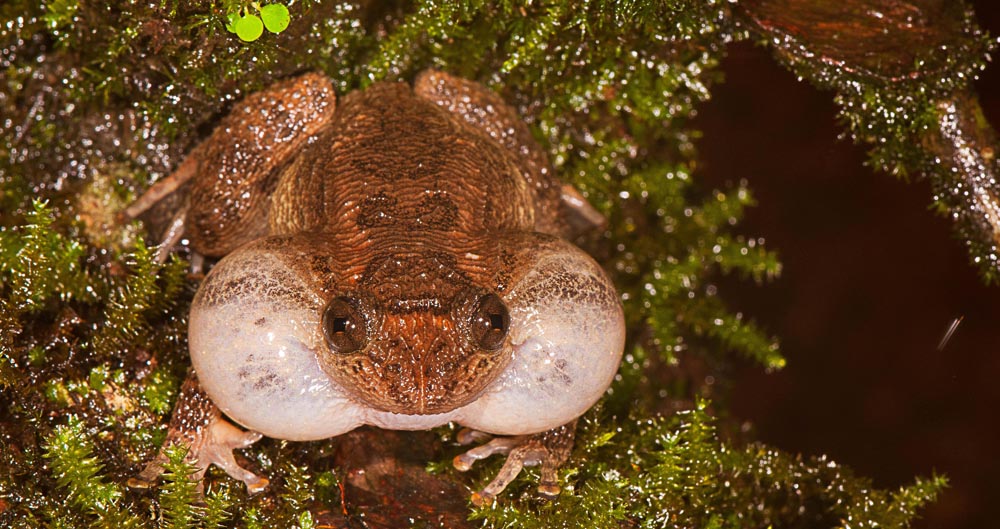
A male Bombay night frog (Nyctibatrachus humayuni) calls out in the monsoonal night for a mate. This species lives only in the Western Ghats of India. They mate at night, perched on vegetation above fast-flowing forest streams, making their behavior difficult to observe. However, researchers have now learned that these frogs mate in a unique way, with the male loosely draped over the female.
[Read the full story about Bombay night frogs' mating positions]
Froggy Style
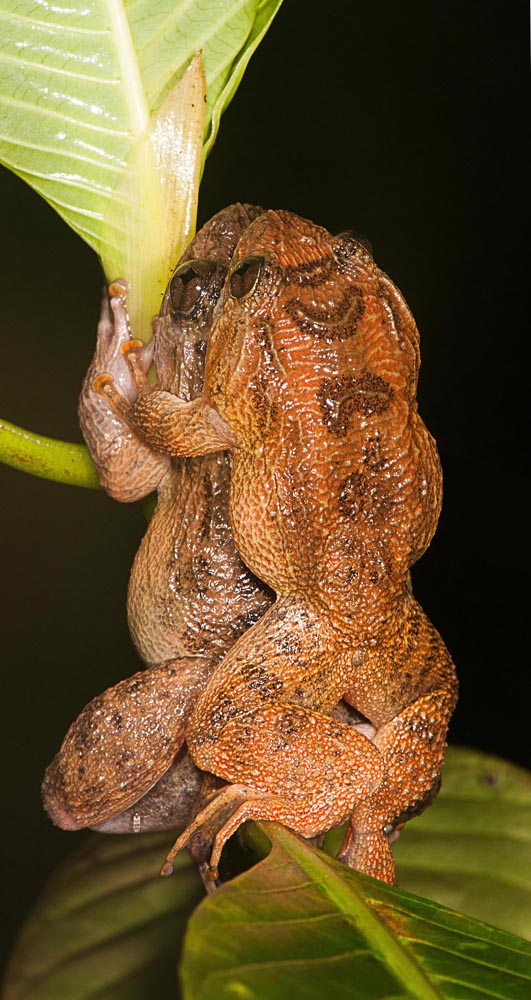
The newly discovered "dorsal straddle" mating position in Bombay night frogs. Unlike in the most common mating positions, or amplexus, this arrangement does not involve the male grasping the female. Instead, he positions his feet on the vegetation on either side of her and releases his sperm before she lays her eggs. After he dismounts, the female releases her eggs and lets the sperm trickle down her back to fertilize them.
Egg-Laying Night Frog
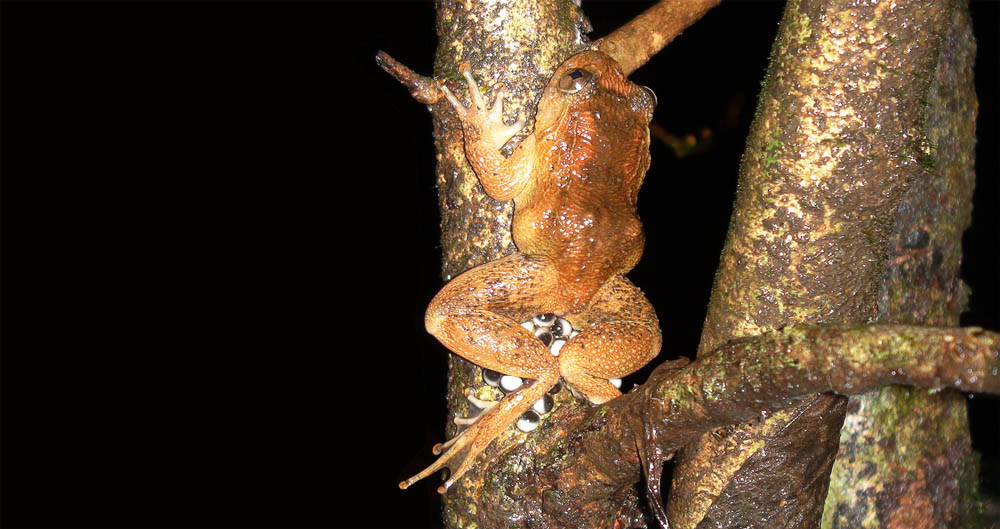
A female Bombay night frog lays her eggs after mating. Males release their sperm on the female's back; she then arches her back repeatedly to get them to leave. Then, she lays her eggs and allows the sperm to drip down her back, externally fertilizing her brood.
This is the seventh mating position, or amplexus, ever observed among frogs. Most frogs mate by having the male grasp the female in various positions to bring sperm and eggs close to each other for external fertilization. But in the case of the Bombay night frog, there is no contact during the egg-laying portion of the process.
[Read the full story about Bombay night frogs' mating positions]
What Big Cheeks You Have

A male Bombay night frog calls in the forest in the northern Western Ghats near Humbarli village in Maharashtra state. The frogs live only in the Western Ghats and mate during the monsoon season (June to August). To document their mating habits, researchers spent 8-hour nights standing in fast-flowing forest streams with infrared cameras.
Get the world’s most fascinating discoveries delivered straight to your inbox.
[Read the full story about Bombay night frogs' mating positions]
Mating Call
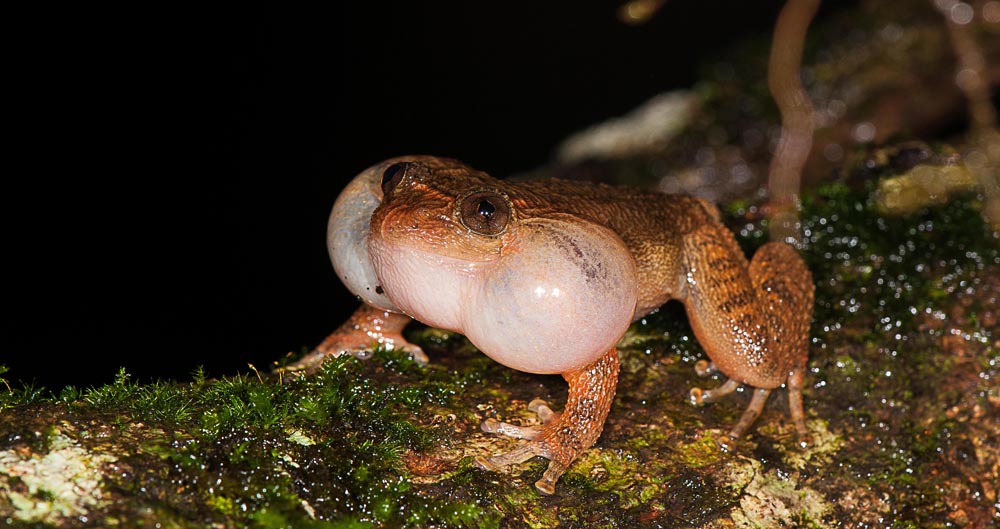
A male Bombay night frog calls from a fallen tree trunk. The frogs mate on leaves and branches above forest streams. The male drapes himself over the female, placing his feet on the vegetation below her. This is unlike most frog mating positions, known as amplexus, which most often involve the male grasping the female from behind.
Calling All Frogs
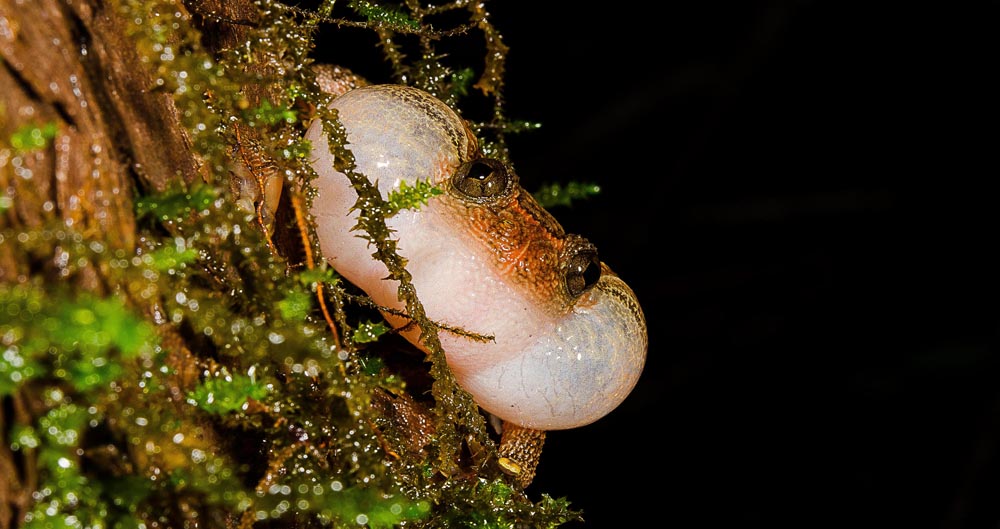
A male Bombay night frog calls in the forest. Beyond their unique mating position, these frogs behave in other unusual ways. Females also produce mating calls, a trait shared by only a couple dozen frog species worldwide. And males fight over territory during mating season.
Snake Snack
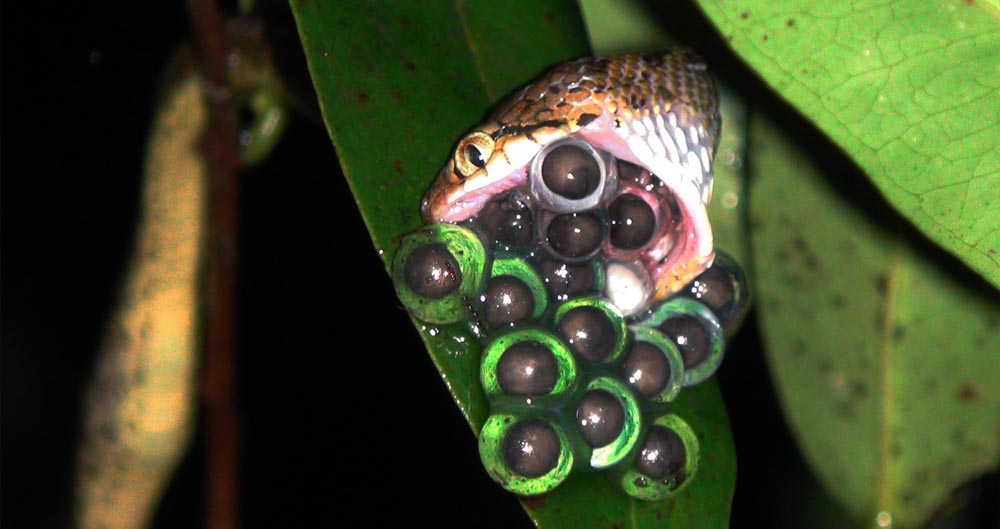
A snake scarfs down the recently-laid eggs of a Bombay night frog. Though snakes have been known to eat frog eggs in South America, this is the first documentation of snakes eating frog eggs in India.
Frog and Eggs
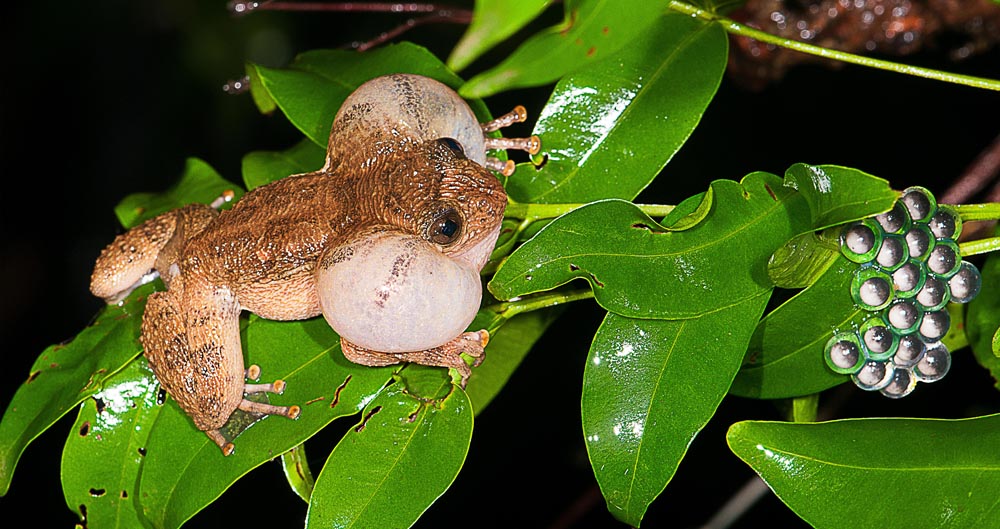
A male Bombay night frog calls from nearby a clutch of eggs on a leaf. Indian night frogs split from other frogs about 80 million years ago, making them an ancient group of amphibians. Researchers aren't yet sure why they evolved the newly discovered "dorsal straddle" mating position.
Bombay night frog nightlife
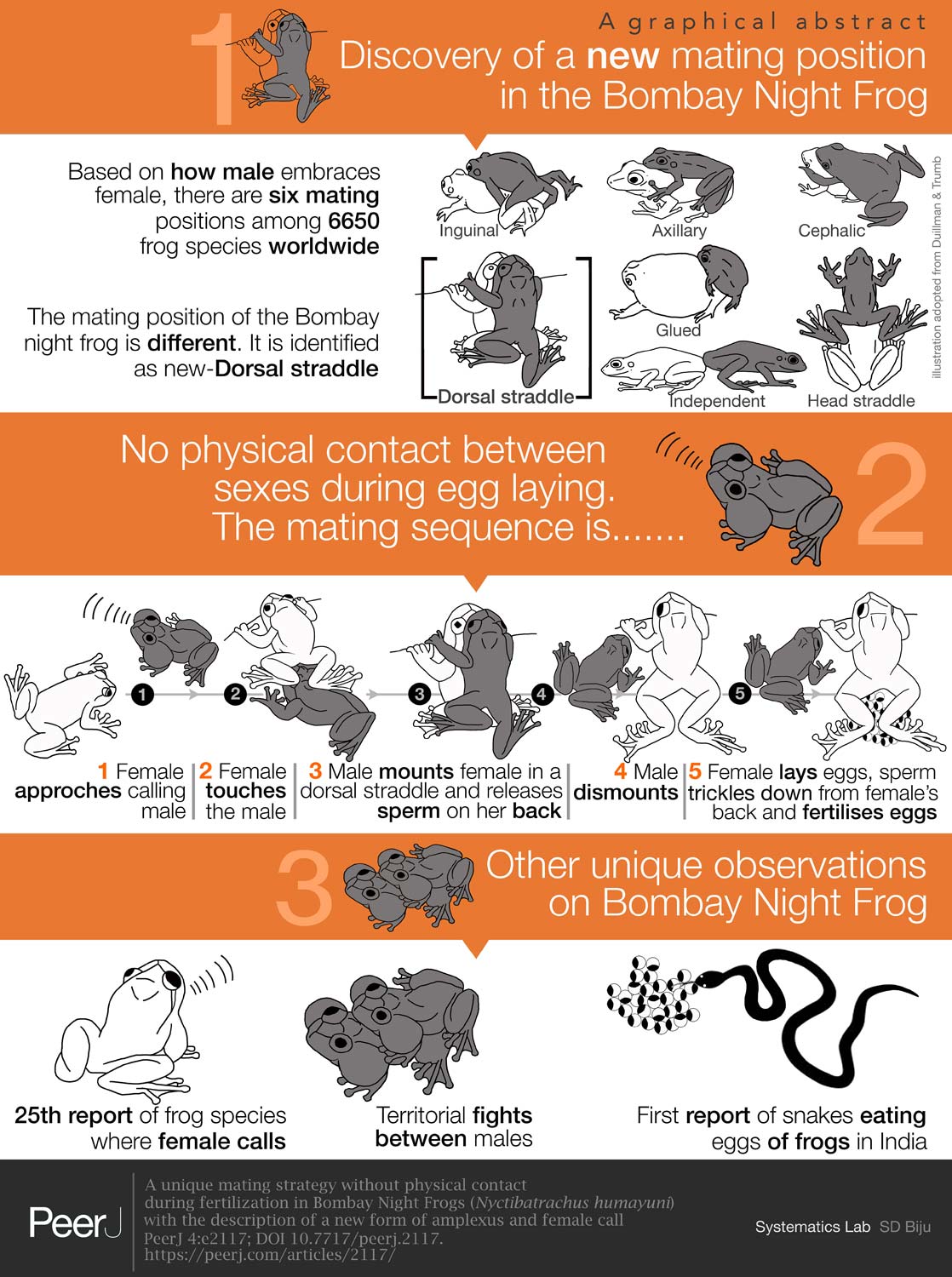
An infographic depicts the six known frog amplexus positions alongside the newly discovered "dorsal straddle." Researchers also discovered that female Bombay night frogs call, that males have territorial battles, and that snakes eat the frogs' eggs.
[Read the full story about Bombay night frogs' mating positions]

Stephanie Pappas is a contributing writer for Live Science, covering topics ranging from geoscience to archaeology to the human brain and behavior. She was previously a senior writer for Live Science but is now a freelancer based in Denver, Colorado, and regularly contributes to Scientific American and The Monitor, the monthly magazine of the American Psychological Association. Stephanie received a bachelor's degree in psychology from the University of South Carolina and a graduate certificate in science communication from the University of California, Santa Cruz.


